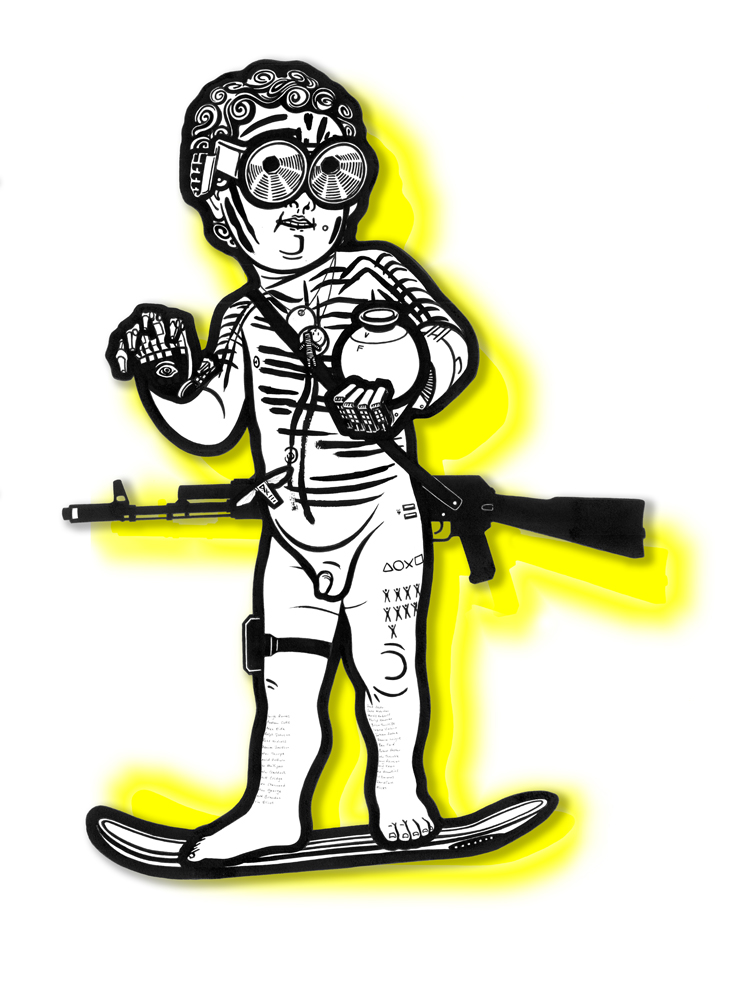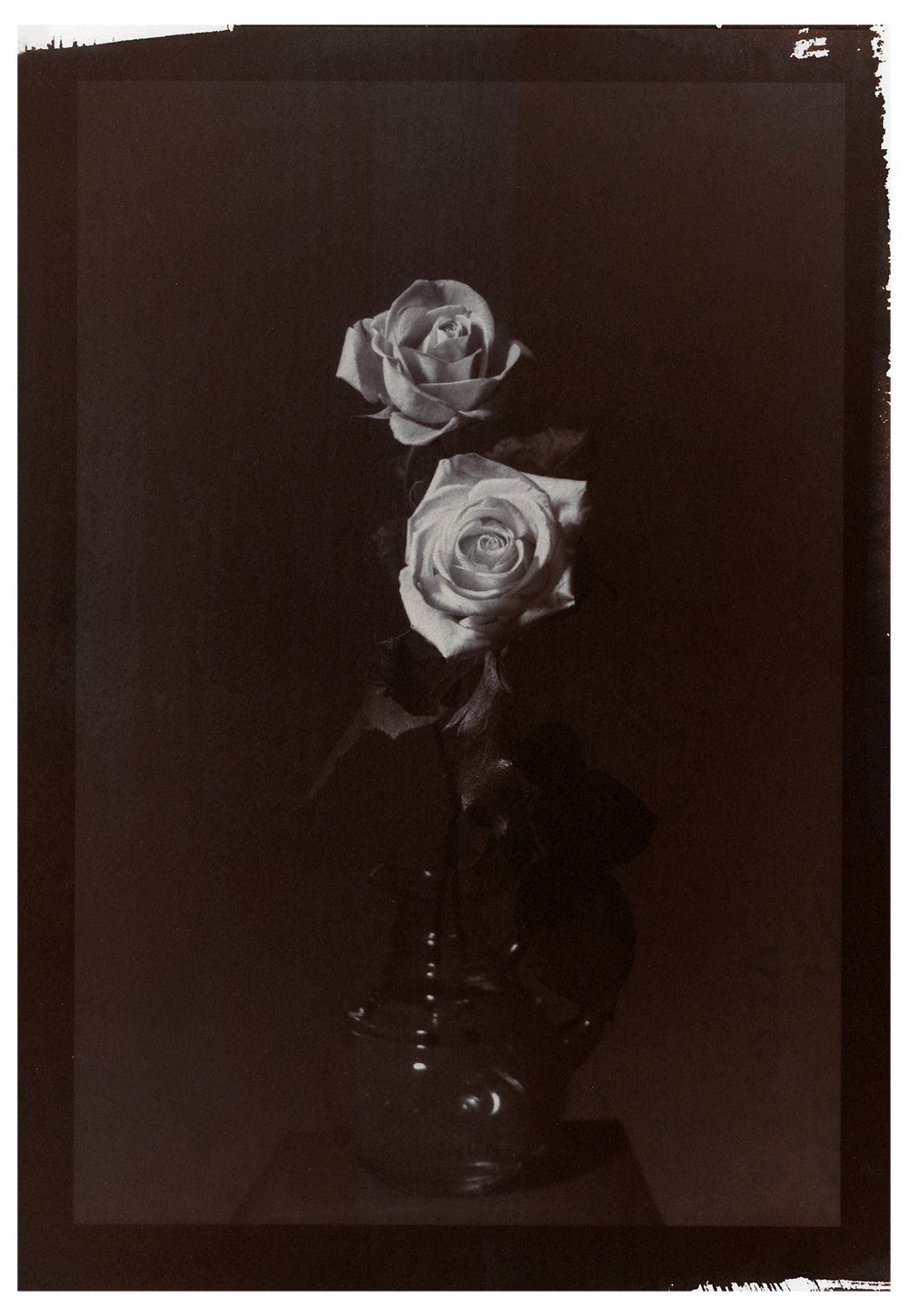
LCN Story: Artist Laura Moreton-Griffiths
Laura Moreton-Griffiths’ practice draws from her fascination for twenty first century political narratives, their complexities and nonsenses. In an attempt to untangle them, her work delves through autobiographical and cultural memories. Recent photographic and wry performative works call on a cast of constructed characters and replicas of real objects from significant events that refer to real social constraints. She is currently working on an immersive history painting.
What new medium or project are you introducing to your practice and why?
Laser cut and powder coated steel. I am making an immersive painting that people can walk around. As well as taking part in the LCN/SPACE programme, I am undertaking the Turps Correspondence course. I have been talking with my painting mentor Emma Talbot about how to resolve the tensions in my work. Increasingly as a painter I am not painting, finding painting no longer historically possible. Recently, I have been making replicas of real objects from significant events, and making performances via a cast of characters. This project is an attempt to realise my ideas in a more painterly way, whilst using material and method of manufacture that supports a narrative about technology and the near future.
I want to create a history painting, to make something monumental and immediate and relevant to the time that we live now. To take something conservative, even reactionary, and shake it up. Traditionally a history painting is a show of skill, loaded with highbrow messages – a key event, a moment in time, captured, often used as propaganda, in the service of state and empire. Returning to my conversations with Emma Talbot – I am exploring how to build a history painting as the voice of the people, or those without governing power.
I made two prototype groups out of ply, each with a different supporting mechanism. One group of three characters about Mary Wollstonecraft was made with 4mm ply and the other group of nine characters, called Smoking Gun, was made with 6mm ply. Each element was hand cut and painted with multiple layers of gesso to build a meticulous surface that I painted on with Indian ink. This time I wanted to paint in oil and capture the brush marks, so thought steel would provide a better support and more durable surface.
The flat pack characters are women and children, with a twist. They are made up of ideas and imagery collaged together. All sorts. From statues from classical antiquity, the 50s housewife, aliens, the latest military technology that will most likely be in use in 70 years time, but not by humans, by AI. In this story, we’ll all be long gone.
It’s also essential that I find out what people think and feel when they see the painting. I want to test it with public audiences and to exhibit the complete painting in London and also tour it in the UK. I am really keen to show the work to public non art audiences in non gallery places. I wanted help and advice on how best to do this.
What was the main motivation behind your application to the LCN programme?
I have wanted to work with laser cut steel for a long time. And I have been working hard to further professionalise my practice. Anne Krinsky, a previous participant, said LCN could help and recommended the programme. I needed technical help with the actual fabrication of the work and advice about reaching new audiences. My mentors Kathrin Böhm and Levin Haegele have given me sound advice on all aspects of its production and promotion. LCN also arranged for me to access Machines Room, an open access makerspace and Blackhorse Workshop, a wood and metal workshop and one to one sessions with experts that helped too.
In a one to one session with Karen Davies, we looked at what I needed to complete the project and also my strengths and weakness, what I need help with and what I can do to develop my practice generally. The programme places emphasis on the business side of being an artist, for example, how to commission and work with fabricators, quality control and project planning. This has helped with my aim of earning more of my income from my art making. I have recently, started to commission fabricators to make limited editions of selected works from my artist proofs.
I also wanted to make a successful application to the Arts Council to fund the project. It has taken me two years, two prototypes and four attempts. Each time the work developed. This time I was successful. I think because LCN/SPACE took me seriously and gave me their support, ACE did too.
What is the most useful advice or tips you’ve been given on the programme so far?
Everything has been useful. Everyone I have spoken with has had something key to contribute. There are 31 artists participating in the programme. That’s an amazing new network of peers. The fortnightly crits have been enormously helpful. We are a very diverse group working across a range of media. Everyone was selected because they are at a pivotal point in their career, so everyone is working at a good, engaged level. It’s good to hear about their practice, processes and concerns and discuss unresolved issues for the realisation of our projects.
Philosophically, my work hit quite a few hurdles. Mainly to do with the themes of the work – how to represent history appropriate to the time in which we live and visions of the near future. So I have been doing a lot of reading. Being accepted onto the programme helped me secure the ACE funding, which has enabled me to invite Nina Power author of One-Dimensional Woman and Dr Victoria Browne author of Feminism, Time and Nonlinear History to talk during the showcase. As well as helping me with my thinking about the work, I am keen to share the discussion with public audiences, so the talk will be filmed and shared online. It’s great of LCN/SPACE to host the event.
A key part of the programme is the showcase. In part, the opportunity to test the work publicly and also to be able to invite all the people who have supported me so far to see the work in development in such a well respected venue. LCN arranged a gallery tour for us. We met Andrea Schlieker, Director Commissions and External Projects at commercial gallery White Cube, gallerist Kate MacGarry and Michael Smythe, Director of Nomad Projects and Phytology, an alternative cultural institute and physic garden. They talked about the work they do and how they work with the artists they commission. It was very insightful. It has given me the confidence to introduce my work to gallerists with whom I think my work will resonate.
What plans do you have after participating with LCN?
I will continue refining and developing the flat pack painting. Its a long process: research, collaging, drawing, digitising outlines, laser cutting, welding, powder coating, painting in oil. I have more characters to make. I also want to take time to play with the painting and fully activate it. I’m really keen to experiment with the magnetic qualities of the steel, light and sound. I’m working on performing the painting in some way. I will also carefully document and photograph the work – I am putting together a zine and promotional pack.
The painting can be transported easily, so I hope to exhibit the work in its entirety in London and tour it further afield in the UK and possibly abroad. I am working on showcasing more of it in July. After showcasing the work with public audiences, I hope to have lots of good ideas for where I can take it next.
I will also be reporting to Arts Council England.
All my work is politically and historically motivated so I am looking to work collaboratively with a historian or writer. I would very much like to work with a museum collection. Recent works were based on objects in the Imperial War Museum.
Supported by







